A Traveler’s Review of the SANDMARC Smartphone Lenses
We may earn a commission from purchases you make after clicking links on this site. Learn more.Last year, I decided to spend far too much money on a new phone.
For the past decade, I’ve been slowly learning how to pack lighter. As I slowly downgraded from a 70-litre backpack to one I could comfortably carry on a plane, my travels became more enjoyable while my back pain diminished.
There was one travel essential I just couldn’t seem to give up, however: my camera. I travel with the Sony A7 II and love the photo quality it provides.
But. It weighs a kilogram and is a pain in the ass to carry around with me. I try to document every aspect of my travels, and that means forever having a weighty camera hanging from my shoulders.
In an attempt to overcome this issue, I decided to splurge on a new iPhone, upgrading from my embarrassingly-outdated iPhone SE to the XS. I hoped the upgrade would mean that I could start leaving my camera behind.
Sadly, that wasn’t the case.
I quickly discovered the iPhone XS camera, while one of the best on the market, was still limited. The photos weren’t anywhere near as good as the ones I get from my Sony. Cue me continuing to reluctantly drag my camera around the world.
Last month, SANDMARC reached out to see if I was interested in reviewing its series of lenses for smartphones. I was immediately interested, because it sounded like the solution I’d been looking for.
Perhaps attaching these lenses to my smartphone would upgrade my photos to the point where I could start leaving my camera behind. A glimpse of the company’s Instagram account made a solid case that they could.
SANDMARC sent me three of its lenses to review: the wide-angle, fisheye, and macro versions.
What’s in the Box?
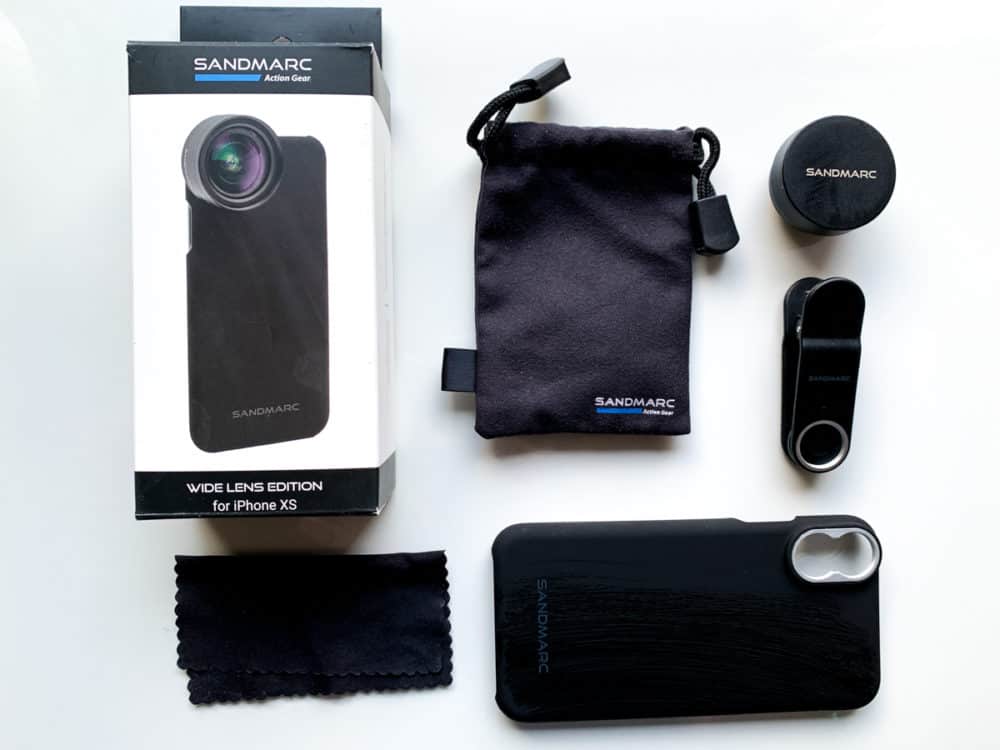
Each lens came securely packaged in a cardboard box, which also contained several other accessories.
First, there’s the phone case that the lenses screw into. Mine was for the iPhone XS, but you can buy versions for every iPhone model from the 7 and 7 Plus upward.
There’s also an external clip included for those not using an Apple device. It functions in much the same way: you screw the lens into the clip and then secure it over your phone’s camera.
The box also contains a drawstring bag to keep the lens in, and a small microfibre cloth. You can never have too many of those.
Design and Build

My first impressions of the lenses were solid: they’re compact (around 40 mm in diameter) and made from multi-coated glass. They all felt sturdy and well-built, without being overly heavy.
For the ultralight travelers among us, the wide-angle lens was the weightiest of the group, at 71 grams. The fisheye lens weighs 55g, and the macro merely 25g. Each lens has a slim plastic cover for the front and rear to stop them from getting scratched.
While I barely noticed the weight of the macro and fisheye lenses, the wide-angle lens was more noticeable when it was attached to my iPhone.
The phone was still perfectly usable, but I often needed to use two hands to steady the screen while taking photos. I also felt a little more weighed down when carrying my phone in my pocket with the wide-angle lens attached.
How the SANDMARC Case Works
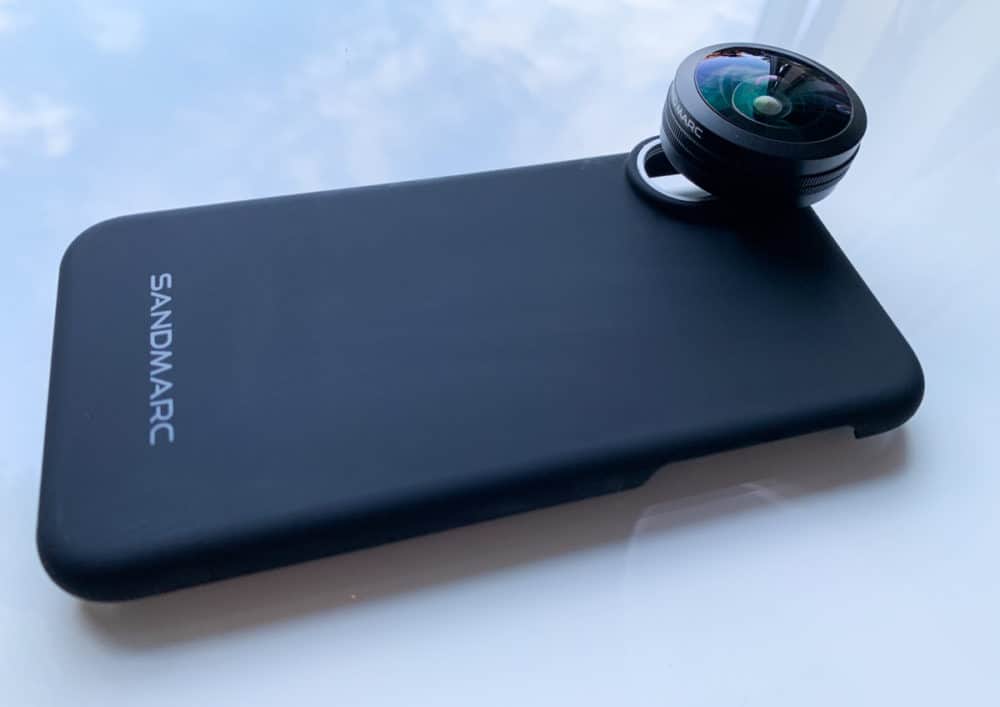
The case is made of a smooth, lightweight plastic that has a slight rubbery feel. It’s thinner than phone cases I’ve used in the past, which has both pros and cons.
On one hand, it doesn’t add a huge amount of extra weight or size, so you can still easily keep your phone in your pocket without any issues. On the other hand, if you happen to drop your phone, the case isn’t going to provide much protection.
Unfortunately, the case doesn’t have the sturdiness of the lenses and doesn’t feel as well-built. Mine developed a crack in the corner from one month of light usage, during which I only slipped it off the phone once or twice.
The split didn’t affect how the case or lenses functioned, and because SANDMARC provides a case with every lens, I had two spares to fall back on. Even so, it was a surprise given the quality of the lenses themselves.
The lenses screw into a metal ring on the case, with two position options depending on which rear camera you want to use. You can screw the SANDMARC lens over either the default iPhone lens, or the telephoto lens below it. Either way, the lenses sat securely and tightly in place once they were attached, with zero risk of falling off.
I’ve kept the case on my phone for the past month, whether I’ve been using the lenses or not. Other than the crack, it’s done a decent job, although the slight bump of the lens mount does make the phone a little thicker in one corner.
The design of the iPhone XS camera also means that part of the SANDMARC lens covers the flash while it’s attached to the mount, rendering it unusable. This won’t be a big issue for many people ( I never use the flash, for example) but if you do, it may be a frustration.
Of course, if you don’t particularly like the SANDMARC case, just pack the clip accessory instead.
A Look at the Clip-On Mount
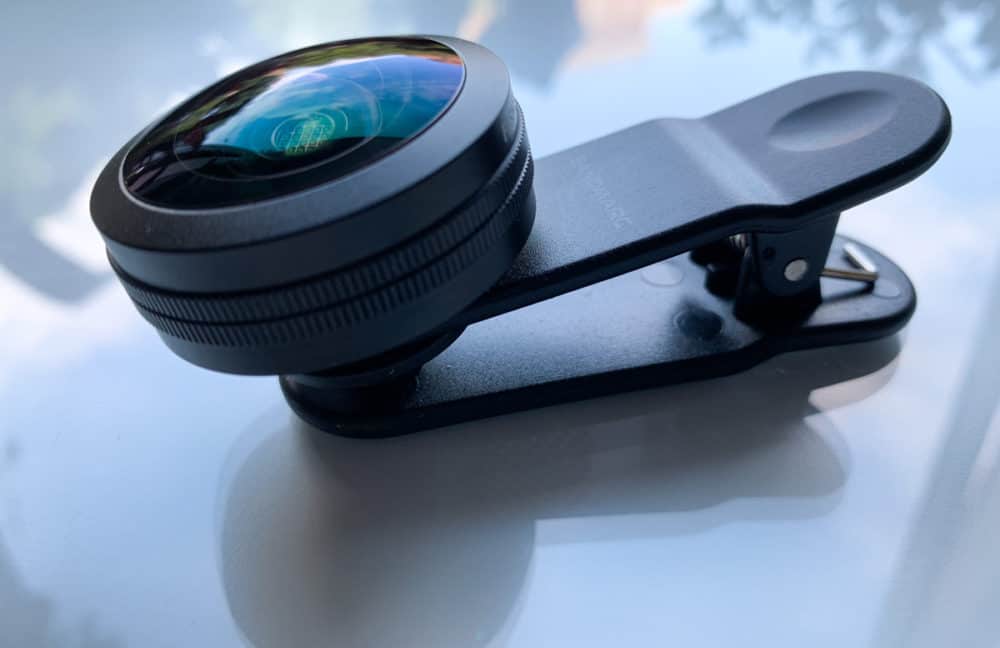
I was intrigued to see how well the clip-on mount worked in the real-world, so borrowed my partner’s Pixel 2 phone to try it out for the afternoon. Overall it functioned surprisingly well, as long as you can live with 20 seconds of trial and error while you get the lens perfectly aligned.
There’s some soft padding on one side of the clip to prevent your screen from getting scratched, with the other side designed to be placed directly over the top of your phone’s existing camera.
The easiest way to get it in the right spot was to open the camera app on the phone, and then move the clip around until no part of the lens showed on the screen. Once secured, the clip stayed firmly in place as I shot my photos.
One benefit of the clip-on mount was that it made switching between the different SANDMARC lenses faster and easier than using the case. Each of the lenses came with their own clip attachments, so if you screwed them into place in advance, switching between them is pretty fast.
The clip-on mount also lets you improve your selfies! If you want to have more of your background featured in your self-portrait photos, using the clip to place the wide-angle or fisheye lenses over your front camera helps you do so.
I particularly like using a fisheye lens to take selfies when I travel, since it shows more of the surroundings that usually get cropped out of photos by the standard iPhone front-facing camera.
So how are the photos?
The SANDMARC Wide-Angle Lens
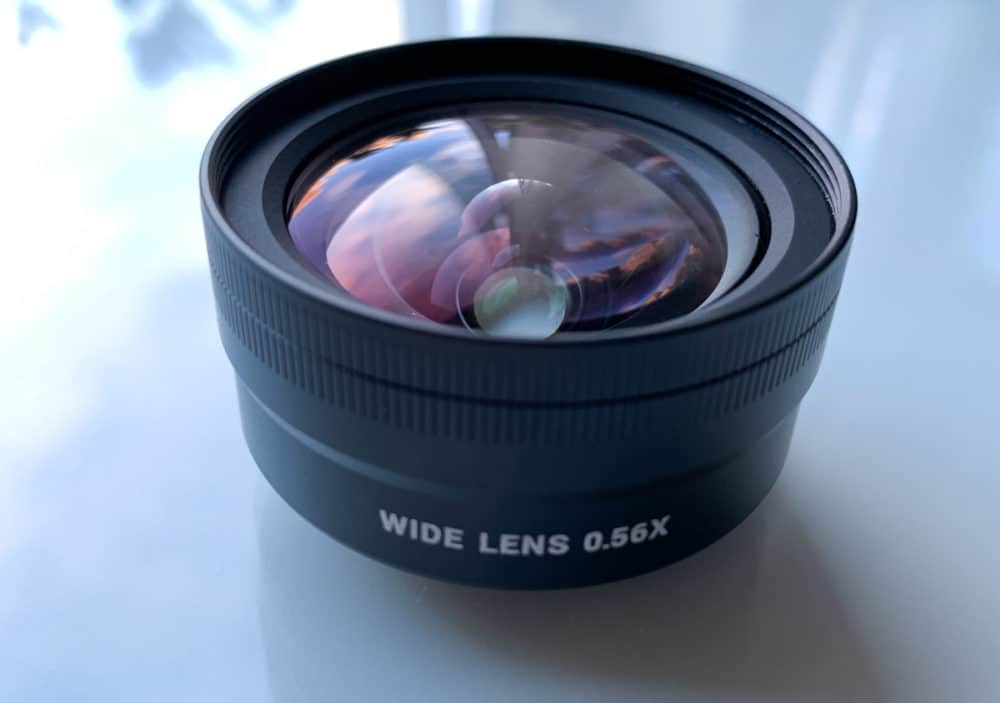
For most travelers, the wide-angle lens will be the one they use most often on the road. It gives twice the field of view, letting you fit more of the scene into your shot.
That’s useful in many situations, from taking photos of landscapes, crowds, and big buildings to getting more of your fancy hotel room into your shot. The photo quality was fantastic, and I saw zero signs of distortion at the far edges of the frame.
As I mentioned above, this is the heaviest of the lenses, which can lead to the phone feeling a little unbalanced. For a steadier photo, you’ll probably want to hold it with both hands when shooting.
Below, you can see how the same scene looks when shot with the standard iPhone camera, the SANDMARC wide-angle lens, and the SANDMARC fisheye lens. All photos are unedited. Click or tap for a larger version.
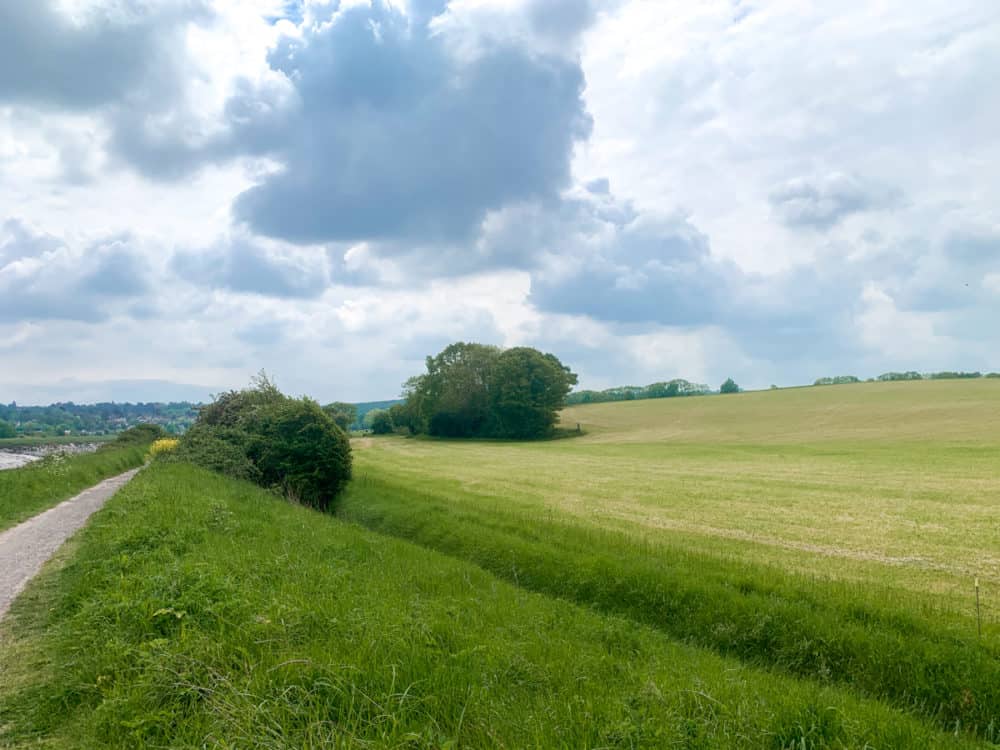

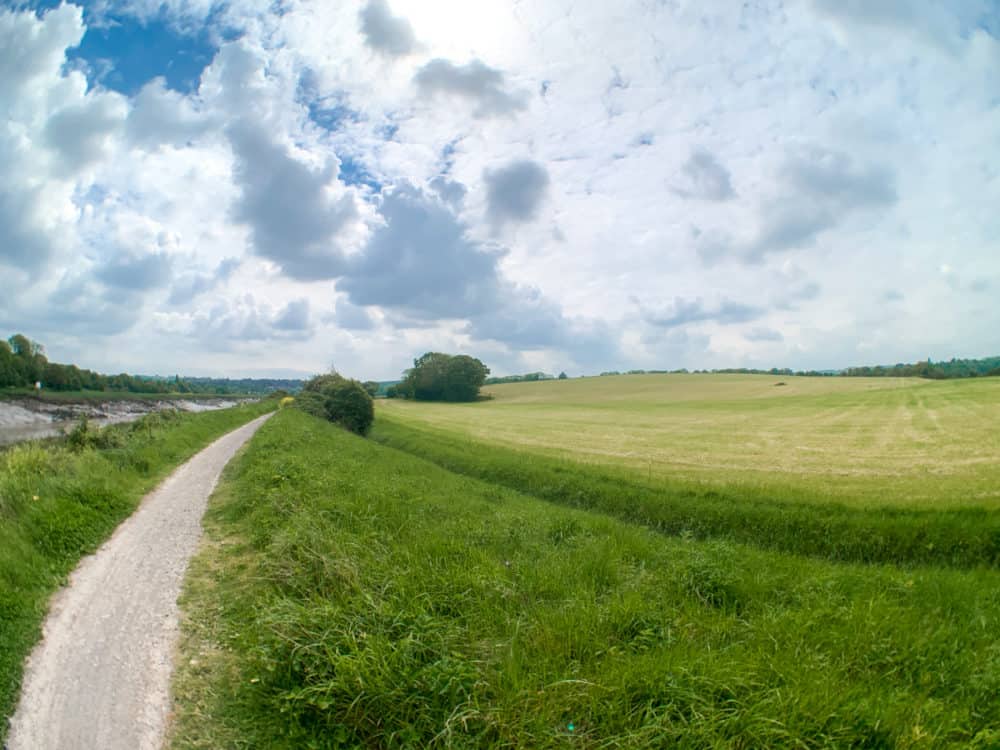
The Fisheye Lens
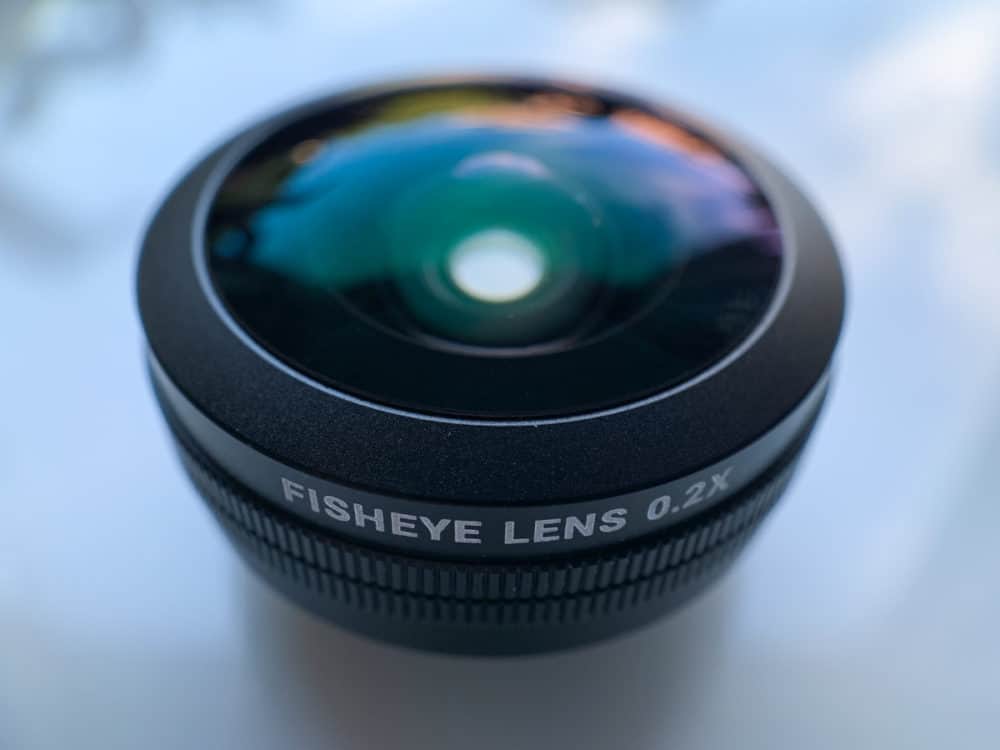
The SANDMARC fisheye is a 10mm lens that’ll capture even more of a scene than the wide-angle. Not everybody loves a fisheye lens, as they can cause a significant amount of distortion, but I found it wasn’t too extreme with SANDMARC’s version.
I did, however, notice some blurring around the edges of the photos when using the fisheye lens, which you can see in the photo above.
I found this lens to be most useful for photographing hotel rooms and small coffee shops, for taking selfies, and for filming travel videos with a GoPro-esque effect.
The Macro Lens
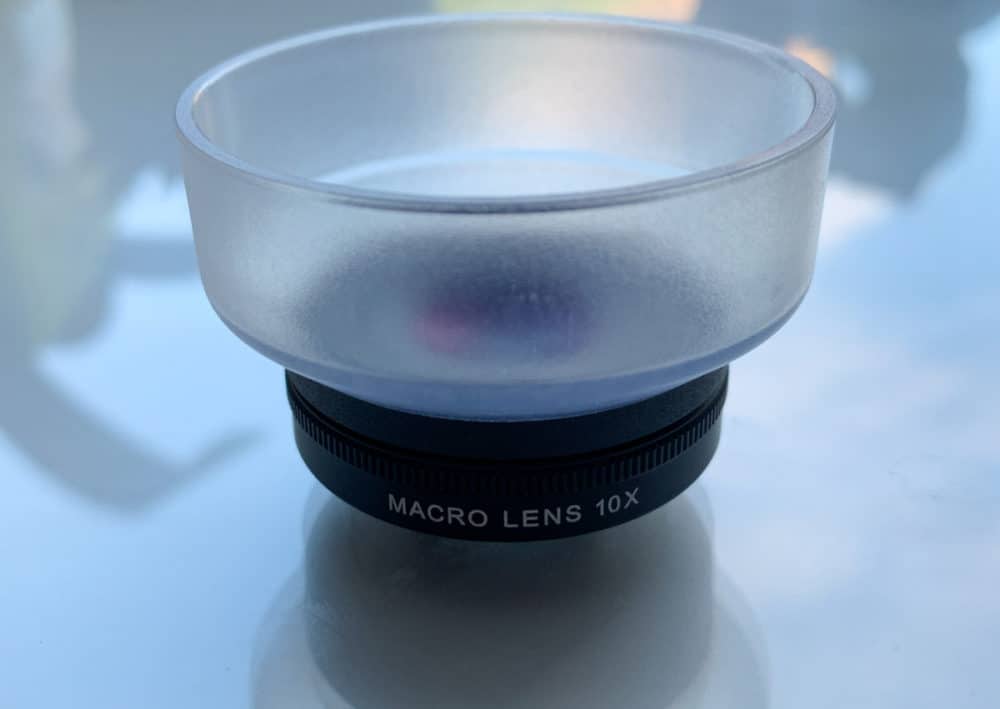
I had the most amount of fun playing around with SANDMARC’s macro lens, although it’s probably the one that has the fewest use cases for travelers. Unless you intend on taking lots of artsy, close-up photos around the world, this probably isn’t going to be super-useful when you’re on the road.
Still, the lens itself is wonderful, and I loved taking close-up shots of everything in my home, then gasping when I saw how much dust was hanging around. I particularly enjoyed taking photos of flowers and plants with this lens, and even zooming in on my boyfriend’s eyeball.
Click/tap on the tabs to see each photo.
The macro lens comes with a detachable translucent plastic hood, designed to help you ensure all of your photos are perfectly focused while still letting in plenty of light. If you’re touching an object with the plastic rim, it’s in focus. Very easy.
If you love taking super-super-up-close shots, you can use the SANDMARC case or clip-on mount to attach the macro to the telephoto lens that’s built into the more recent versions of the iPhone. This gives you an additional 2x zoom.
Other SANDMARC Offerings
In addition to the three lenses I was reviewing, SANDMARC also makes a telephoto lens for those who prefer to zoom with their camera rather than their feet. I wasn’t sent one of these to review, but I expect it to be the most useful lens for travel photography after the wide-angled one.
SANDMARC also offers a couple of filters that can be attached to its lenses for those keen to step up their phone photography even more. Both polarised and neutral density filters are available on Amazon or from SANDMARC.
The Cost
All four lenses mentioned in this article are available individually from SANDMARC’s online shop, priced as follows:
- Wide Lens Edition – $99.99
- Fisheye Lens Edition – $89.99
- Macro Lens Edition – $89.99
- Telephoto Lens Edition – $99.99
You can also buy the Lens Kit from SANDMARC for $239.99, which includes all of the above lenses. You’ll save a whopping $150 when compared to purchasing the four lenses individually.
If you’re considering buying two or more of SANDMARC’s lenses, it’d make sense to buy the entire kit to get more for your money.
Get regular updates from the world of travel tech and remote work
News, reviews, recommendations and more, from here and around the web
So, Are the SANDMARC Lenses Good for Travel?
My verdict: Yes!
While the SANDMARC lenses are reasonably pricey, I think they still offer good value, especially if you buy them as part of the lens kit. The closest competitor is Moment (reviewed here), which sells its lenses for a similar price, but doesn’t bundle them all into a discounted kit.
I was impressed with the improvement in photo quality that came from using these lenses. I’ll be taking both the wide-angle and fisheye on upcoming trips, and expect better landscape shots and selfies because of it.
I don’t think the macro lens will do much for my travel photography game, but it’s definitely useful in my non-travel life. I’ll likely now be spending an alarming amount of time taking up-close photos of my plants, for example, and then wondering how on earth they managed to get so dusty.
At the start of this article, I anticipated that SANDMARC lenses would give me the push to leave my expensive camera behind on upcoming trips. How do I feel about this now?
While the lenses have improved the variety and quality of the photos my iPhone can produce, the images are still limited by the size of the sensor. There’s not much that SANDMARC can do about that.
Unsurprisingly, it turns out that even good add-on lenses won’t turn my iPhone into an expensive full-frame camera, so my Sony will still be coming along on my travels.
The SANDMARC lenses do provide extra flexibility in what and how I shoot, however, especially when I’m wandering around a new city without my big camera. So, not only will I be taking my camera with me on future adventures, but I’ll now be packing a couple of smartphone lenses in my backpack as well.
I’m not sure if that’s a good or a bad thing, but it’s happening either way.
All photos via author

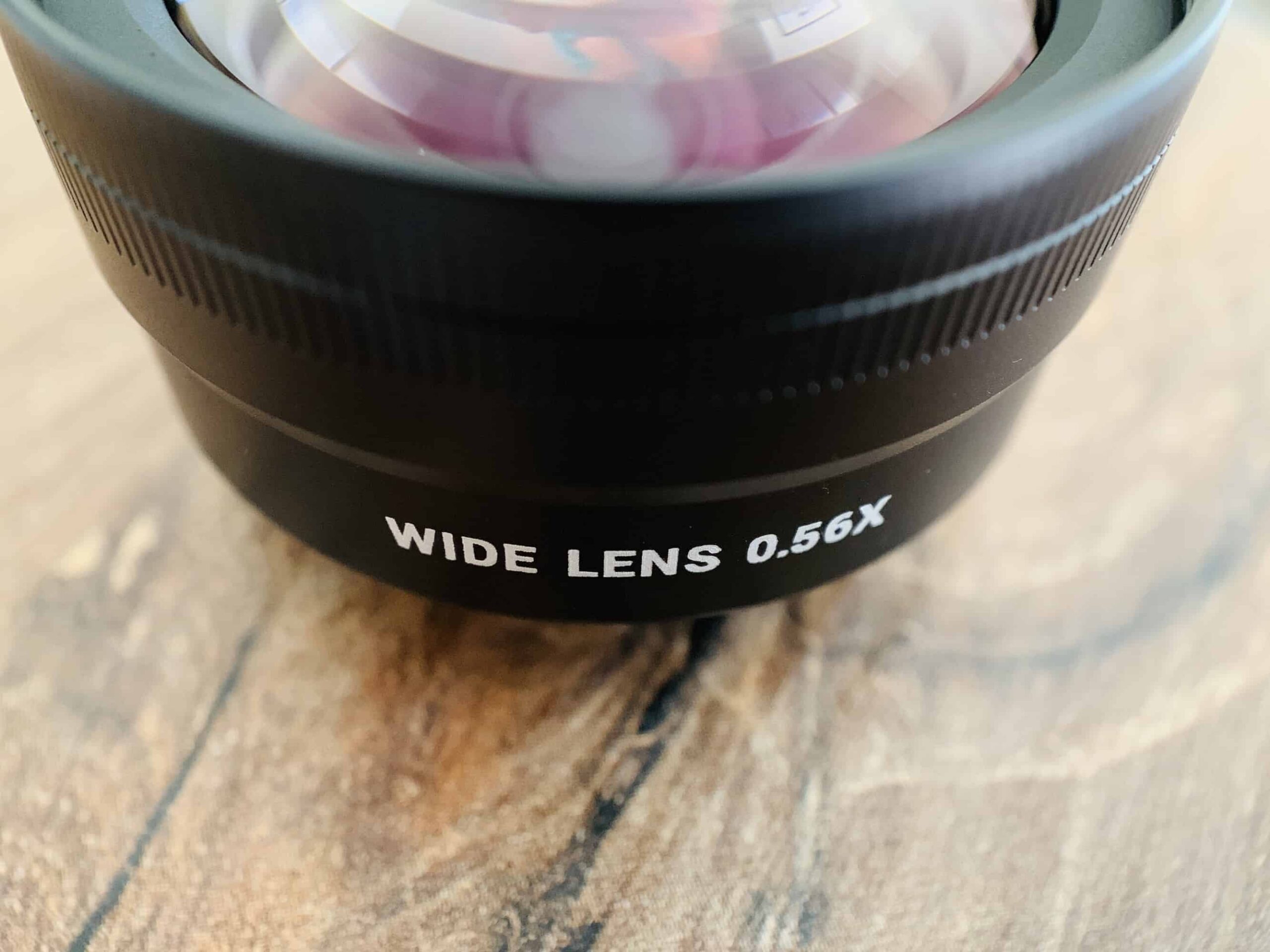
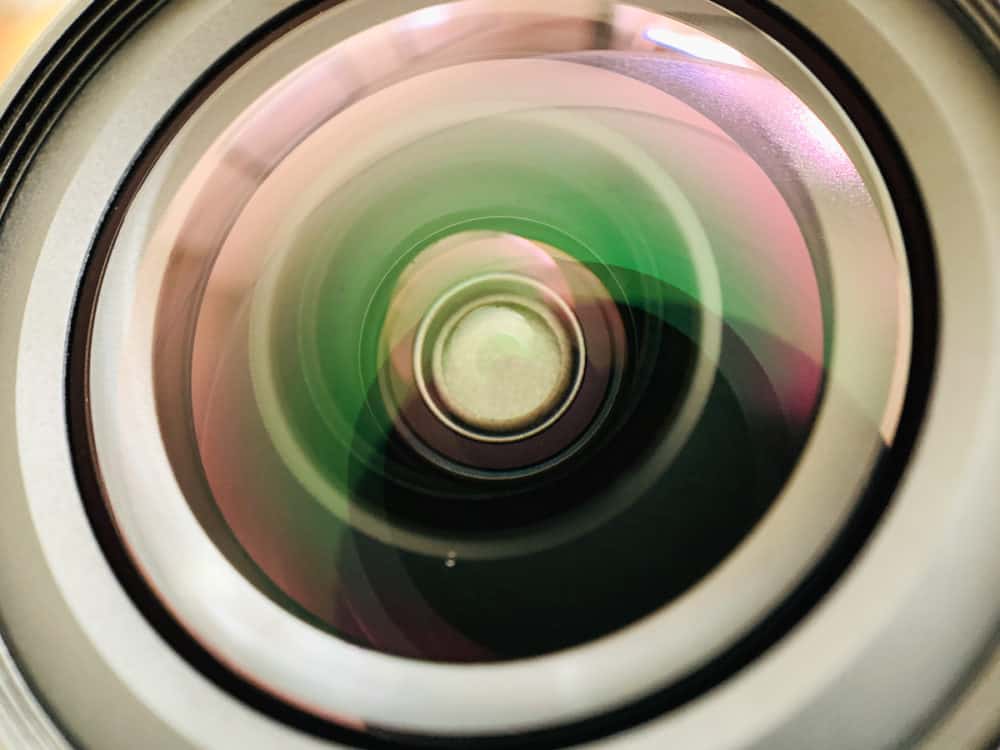


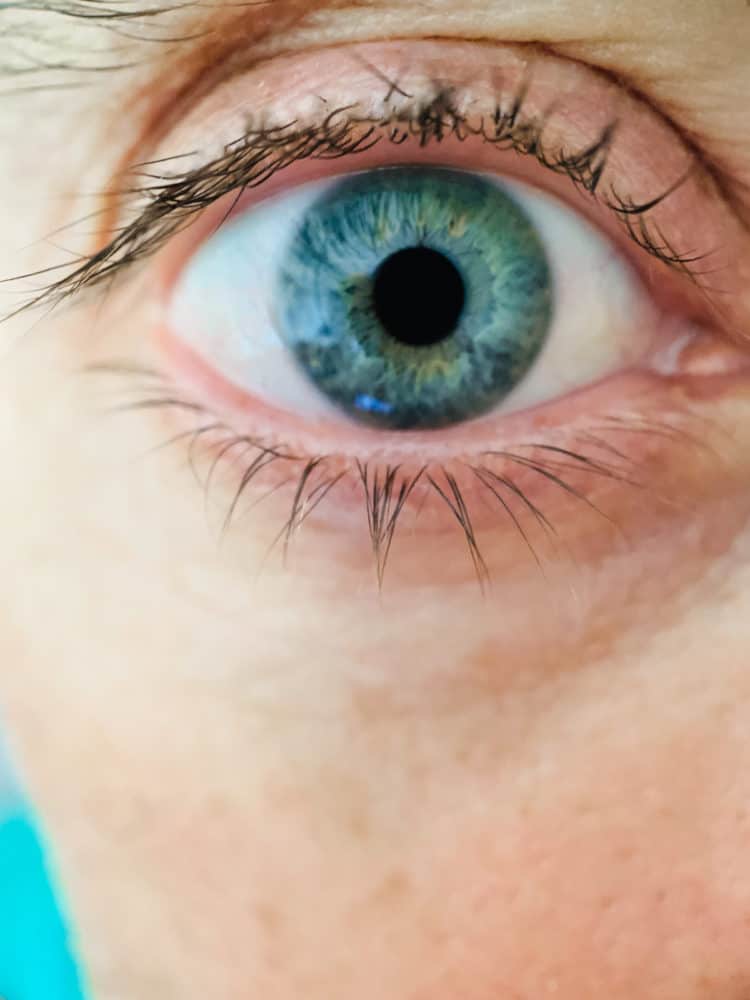

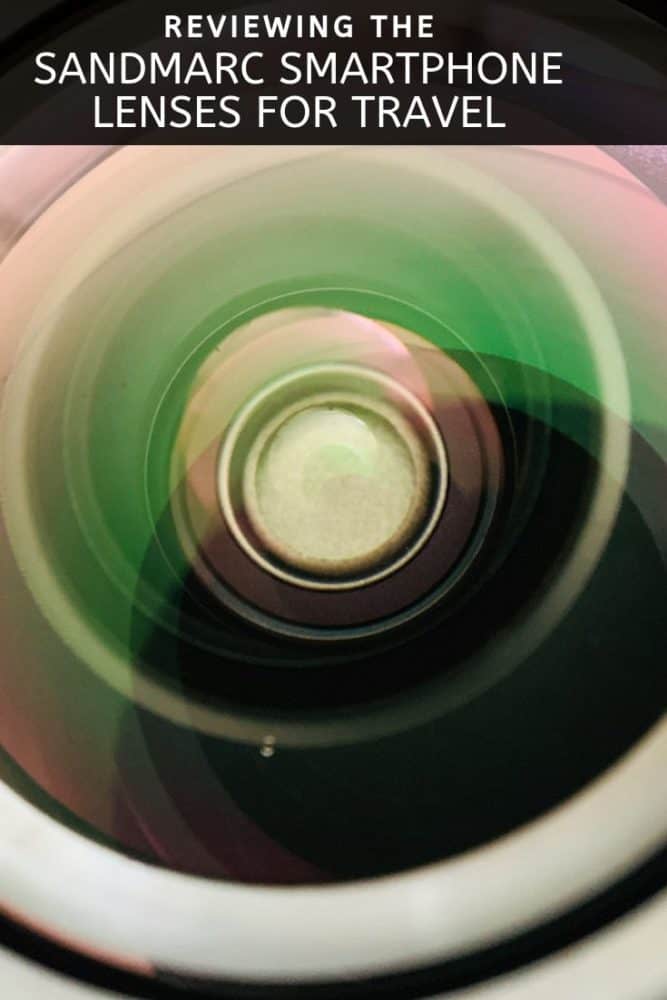
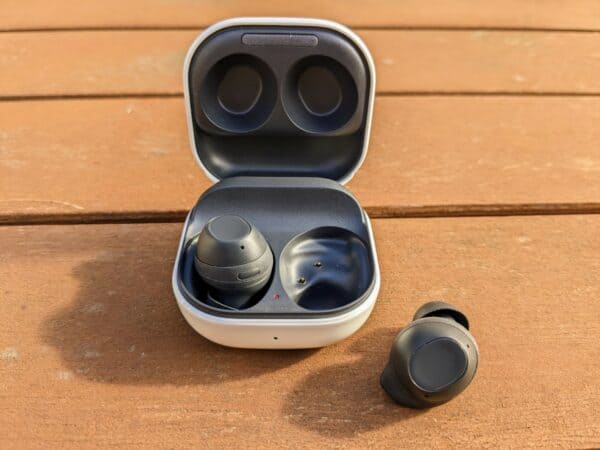
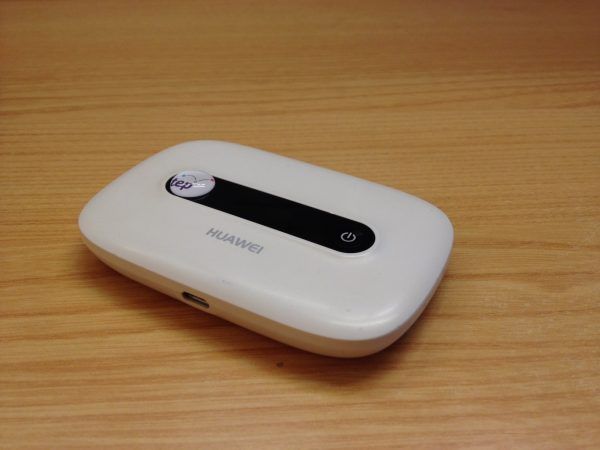



I have an iPhone 11. I am going back and forth between the Sandmarc lenses and Moment lenses. The reviews for each seem good on this site, however the Moment lenses were reviewed by someone with a different type of phone. If you could only pick one…which would it be? I am looking for a little better vacation photo than with my phone but don’t want to buy a DSLR….
Hi Meredith,
It probably depends a bit on which lens(es) you plan to buy. There’s not a big difference between eg. the wide-angle Moment lens and the wide-angle Sandmarc, and prices are similar as well. Moment is probably a slightly better-known brand, so everything else being equal, that’s what I’d go for.
If you’re looking to buy kits containing multiple lenses, though, the Sandmarc ones tend to be quite a bit cheaper. In that case, I’d go for Sandmarc.